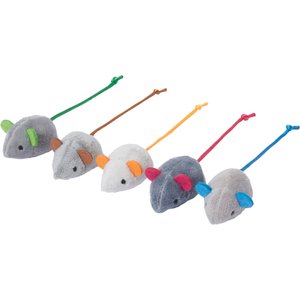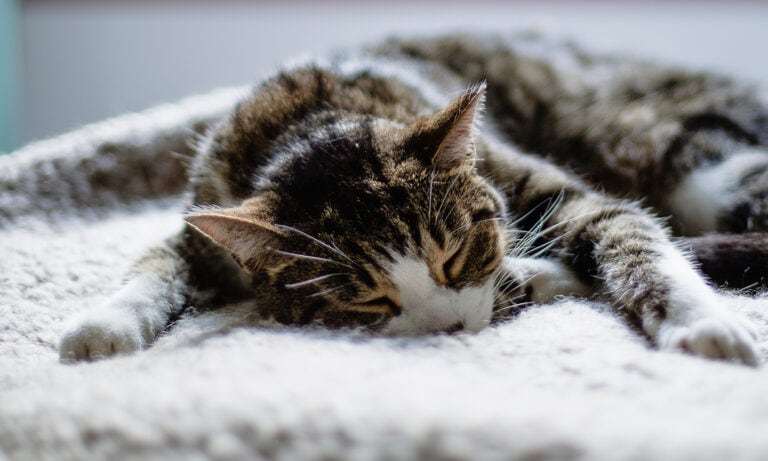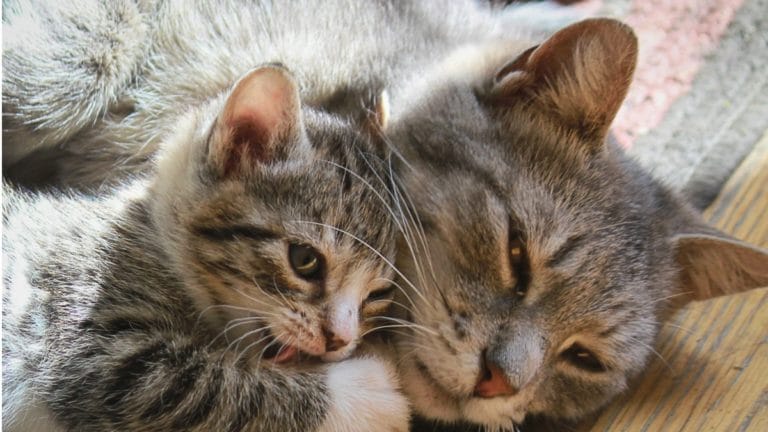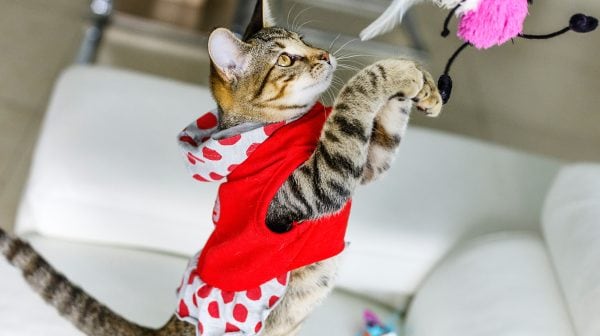In a multiple-cat household, disagreements between feline residents—like a younger cat bullying an older cat—are bound to happen. A younger aggressive cat can be responding to changes in the household (like a new human moving in or a favorite person moving out), a perceived lack of resources (not enough litter boxes to go around) or it could just be the cat’s personality.
But your bully cat isn’t being mean for the sake of being mean. Once you identify why your younger cat acts like a bully, you can take steps to stop the aggressive behavior.
Signs Your Young Cat Is Bullying Your Older Cat
First off, Dr. Lisa Radosta, DACVB, of Florida Veterinary Behavior Service in West Palm Beach and Coral Springs, Florida, points out that the term “bullying” isn’t quite accurate, as it has a meaning to people that is laced with intent and motivation. While some behaviors can have elements of what looks like cat aggression, Dr. Radosta says that they are actually signs of defensiveness and fear. These nine signs include:
- Hissing
- Pouncing
- Swatting
- Staring
- Biting
- Stalking
- Chasing (new cat chasing old cat)
- Growling
- Howling
- Aggressive body posture—arched back, piloerection (puffed-up hair), flattened ears and dilated pupils
When you see this type of body language, your cats are telling you that they’re stressed about living together.
“It isn’t uncommon for a pet parent to believe that a certain cat is the aggressor or bully,” Dr. Radosta says. “After a deep dive, it is the opposite cat or both cats are aggressing toward each other. This body language is a sign that there is a friendship problem, not that one cat is a problem.”
Why Is Your Young Cat Bullying Your Older Cat?
Cats are territorial creatures. Among feral cats, related female cats live together, and it’s common for a new cat (male or female) to be rejected from a colony, Dr. Radosta says. If resources are plentiful, you might see unrelated cats come together, but then they usually go their separate ways after eating.
“In studies of cats living in the same household, it does appear that cats set up little territories within the home,” Dr. Radosta says. “For example, one cat may ‘own’ the top of the fridge and another may ‘own’ the top of the armoire.”
She also points out that we can’t discount the fact that many of our pet cats are not well-socialized. “This lack of socialization will also be a factor in rejection of new cats and subsequent aggression,” she says.
Other reasons for aggression include:
- The new kitten or younger cat is fearful or insecure in their new home, trying to find their place among the feline hierarchy.
- Young cats are curious and just want to play, but the adult cat may not appreciate the kitten’s antics. This can cause the older cat to become aggressive toward the younger cat, which then causes the younger cat to act out even more.
- The young cat is protecting their territory and resources.
How to Stop Your Young Cat from Bullying Your Older Cat
Start with simple management. Dr. Radosta says to only let your cats interact when you’re there to monitor them. That way you can interrupt any negative cat behaviors and separate the cats, if necessary. Here are eight ways to keep your young cat from bullying your older cat:
Offer plenty of resources and enrichment products.
Cats consider litter boxes, food and water bowls, and toys resources to bully or fight over. Dr. Radosta suggests spreading these resources throughout the house. Indoor cats get bored, so provide lots of enrichment products like cat trees, scratching posts and window perches.
Provide plenty of playtime.
Play reduces stress in cats and expends physical and mental energy, Dr. Radosta says. Use interactive toys so they all get a chance to play with you. If the younger cat is constantly chasing the older cat, give the younger one a fun toy they can chase instead.
Give the cats equal attention.
Do something with each cat—just the two of you. Pick an activity that matches their preferences, such as play, cuddle time, trick training or walking on a leash. (Yes, cats can do tricks—as easy as fetch and as “tricky” as talking with buttons.)
Reinforce good behavior.
Hand out treats when your cats get along—even if they’re just tolerating each other. Dr. Radosta says to never punish your cats physically or verbally. It won’t help and leads to more aggression.
Use pheromone diffusers or spray.
These calming pheromones mimic a natural cat odor and can be effective in decreasing aggression. Sprays target a precise area like a cat carrier while diffusers work best in a room. Pheromone diffusers, like Feliway, come in single or multi-cat.
Be on the alert for changes in your cats’ environment.
Find the trigger and avoid, if possible, Dr. Radosta says. Even simple things like loud noise from construction outside the home or rearranging the living room furniture make cats feel less safe and secure, leading to aggression among them.
Break up fights before they start.
If it looks like an actual cat fight is about to happen, put the cats in different rooms until they calm down. Not sure if your cats are playing or fighting? Watch your cats’ body language for clues a fight might break out: flattened ears, teeth bared, tense posture and claws out.
Schedule a vet visit.
An ill or injured cat won’t feel secure, which creates tensions in a multi-cat household. Cats can’t tell us when they feel sick, Dr. Radosta says. If any of your cats suddenly display aggressive behavior, take them for a medical workup.
How to Introduce Cats Properly
We’d love for new cats to instantly become fast friends but it doesn’t always work that way. Always introduce cats slowly and at the cats’ pace, especially the cat who shows the most fear, which could either be the new cat or the resident cat(s).
- Provide an environment that makes the cats feel safe. Start them out in separate rooms while they get used to each others’ presence.
- Swap their scents by rubbing each one with a blanket and letting them “sniff each other out.”
- Switch rooms occasionally so they can smell each others’ scent.
- Feed them and play with them on opposite sides of a closed door.
- Once they meet face to face, if tensions start, give them a time out and try again later.
Cats don’t just “work things out,” so if they’re not getting along, the tensions will just increase, meaning you’ll have to reintroduce them, which is why a proper introduction is so important.
Learn more about cat behavior:
Share:














